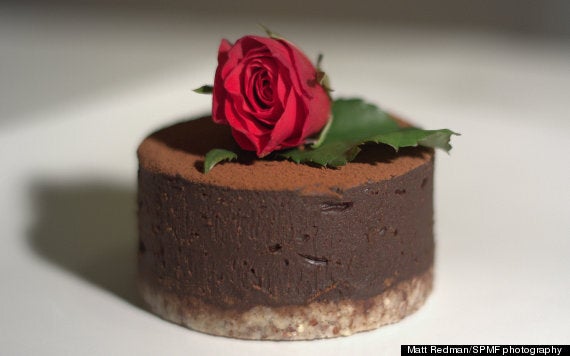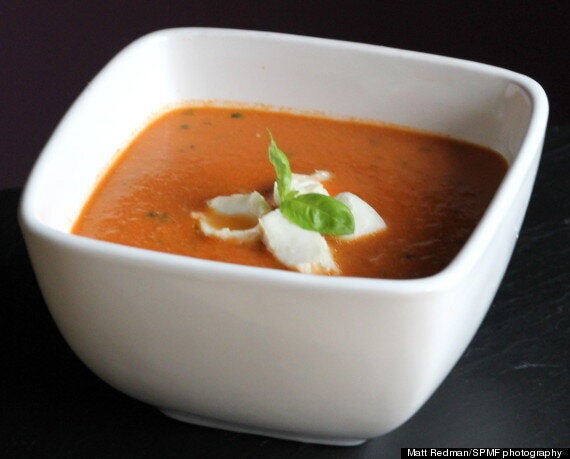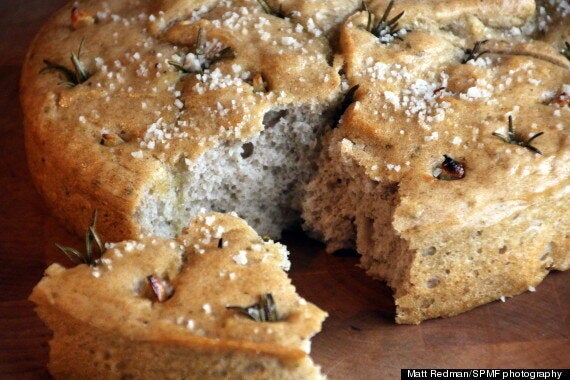The Paleo diet, or eating like a caveman, isn't just about weight loss, it's about a way of eating healthily. If Holly Redman, the chef behind Pure Taste, has her way, we could soon be seeing the UK's first Paleo restaurant.
She has begun a kickstarter campaign to get things going - we asked her to tell us more about it.
"My mission is to change the way people see ‘free food’ - from an uninspiring dietary restriction to a mouth-watering way of eating.
"Paleolithic diets mimic the types and quantities of foods our hunter-gatherer ancestors ate: meat, seafood, nuts, seeds, eggs and plenty of fresh fruits and veggies. The basic premise is that this way of eating suits our genetics much better than the grains, dairy and processed foods that have arisen since the agricultural revolution."
HuffPost UK Lifestyle were quite skeptical about it until we talked to celebrity nutritional therapist Petronella Ravenshear who told us that our digestive systems haven't evolved in the last 10,000 years so this way of eating does make sense.
Story continues below the slideshow:
The big problem though, is that because it is restrictive, it can be quite hard to dine out, making followers of the diet more isolated.
"I’ve been running a monthly pop-up restaurant in Sussex for the last 10 months," says Holly, "specialising in gluten-free and paleo-diet friendly food and it’s been so successful I want to expand the business into a full time restaurant in London.
What is Paleo eating for those who don't know and why is it good for us? "A paleolithic diet is naturally rich in vitamins, minerals, antioxidants and essential fatty acids; high in fibre; focused around foods that release their energy slowly and make you feel full. They are supportive of friendly bacteria in the gut, alkalising and anti-inflammatory."
Although Paleo restaurants have been popping up in Europe and America over the last few years, it's still relatively new to the UK. One of the reasons why it has taken some time to become popular is because "it completely excludes grains, the traditional corners stones of the UK healthy food pyramid, and places much more emphasis on natural fats."
Holly has shared three recipes with us - would you give them a try? They look AMAZING.

Raw Chocolate Cheesecakes
Decant and delicious, but packed with antioxidants and healthy fats, these mini cheesecakes are perfect for a special occasion.
Makes four individual cheesecakes
For the base
60g hazelnuts
1 tbsp of xylitol or coconut sugar
20g Virgin Coconut Butter
For the topping
Flesh from 2 medium avocados (approx. 220g)
55g cocoa powder
140g raw honey or maple syrup
1-2 tsp vanilla extract
110g Virgin Coconut Butter
Extra cocoa powder for dusting
You will also need
Four 7.5cm stainless steel food rings
Baking paper
- 1.Grease and line the inside of each food ring with a strip of baking paper, then place on a baking paper lined tray.
- 2.Using a food processor or nut mill, blitz the hazelnuts to a fine meal, similar in texture to breadcrumbs. Place in a bowl and stir in the xylitol.
- 3.Melt the coconut butter for the base in a small saucepan over a very low heat, then pour into the hazelnut and xylitol mixture, stirring to combine.
- 4.Divide the mixture equally between the four food rings and press down firmly with the back of a spoon to form the cheesecake bases.
- 5.Rinse and dry the food processor bowl then add the avocado, cocoa powder, agave and vanilla extract. Process on high until the mixture is smooth and well combined.
- 6.Now melt the coconut butter for the topping in the same way as before and add to the food processor, whizzing to combine. Remember to stop the food processor a few times and scrape down the sides with a spatula to ensure all the ingredients are evenly incorporated.
- 7.Next, carefully spoon the topping mixture into each food ring until level with the top, then run a knife across to get a clean and even finish.
- 8.Place the finished cheesecakes in the freezer for an hour and a half to set, and then carefully remove them from the rings. The easiest way to do this is to use an upturned glass with a diameter just smaller than the food ring to gently the push the cheesecake base up through the ring.
- 9.The cheesecakes can now be dusted with cocoa powder and placed in the fridge until ready to serve.
Calories 603, Fat 51.6g, Saturated Fat 34.4g, Protein 6.1g, Total Carbohydrates 41.3g, Sugars 26.5g, Fibre 9.7g

Italian Fish Soup
This warming soup is high in protein and loaded immune boosting vitamin C, garlic and zinc, making it the perfect hearty meal for a cold winter’s night
Serves 2
2 large fillets of firm white fish fillet eg Haddock, Coley or Cod
2 tbsp dry white wine
1 30x30 cm piece of foil lined with baking paper
1 white onion, finely chopped
1 tbsp olive oil
3 cloves of garlic, crushed
1 tbsp of chestnut flour
1 can of chopped tomatoes
30g Pumpkin Seed Butter
500ml of vegetable/fish stock or water
1 Bayleaf
Freshly ground black pepper
Handful of fresh basil + extra for garnishing
- 1.Preheat the oven to 200C.
- 2.Place the fish fillets into the baking paper lined foil and fold up the edges. Drizzle the wine over the fish and then loosely fold over the top edges of the foil to seal the parcel.
- 3.Place the fish parcel on a baking tray and cook in the preheated oven for 10-15 minutes depending on the thickness of the fillets.
- 4.While the fish is cooking, use a large saucepan to gently cook the onion in the olive oil until soft. Then add the crushed garlic and cook for 1-2 minutes more.
- 5.Add the chestnut flour to the onions and garlic and stir to coat.
- 6.Next, stir in the pumpkin butter, chopped tomatoes and stock or water, ensuring all the ingredients are well combined.
- 7.Add the bay leaf, then simmer for 30 minutes stirring occasionally.
- 8.When the soup has finished simmering, remove the bayleaf, then carefully open the fish parcels and transfer the juices to the soup, reserving the fish for later. After that use a hand blender to blend the soup.
- 9.To finish, roughly rip the basil leaves, stir these into the soup and season to taste with freshly ground black pepper. Pour the soup into warmed serving bowls and then carefully flake the fish onto the top before garnishing with some more basil and serving.
Calories 382, Fat 16g, Saturated Fat 2.4g, Protein 35.9g, Total Carbohydrates 24.3g, Sugars 9.7g, Fibre 5.7g

Gluten Free Focaccia
This bread is the perfect example of just how good gluten free bread can be. Light and fluffy, but moist and satisfying you’ll probably find you never need the freezing instructions!
Makes 16 pieces
For the bread
200g buckwheat flour
200g rice flour
200g potato flour
2 tsp xanthan gum
7g sachet of fast action yeast
1.5 tsp Celtic sea salt
1 tbsp of chopped fresh rosemary
1 medium egg, beaten
100ml of extra virgin olive oil
600ml lukewarm water
To decorate
4-6 garlic cloves cut into slivers
3-4 springs of rosemary for decoration
Extra Celtic sea salt for sprinkling
1.Oil a 13 x 9 inch, deep non-stick roasting tin.
2.Place the flours, xanthan gum and yeast in a mixing bowl and stir well, then stir in the salt and chopped rosemary.
3.Make a well in the centre and stir in the egg, 1 tbsp of the olive oil and the water to make a stiff batter.
4.Beat the batter well with a wooden spoon for a few minute then spoon into the tin and spread out with a spatula.
5.Cover the tin with oiled cling film and leave in a warm place for 1 hour or until the dough has doubled in size.
6.Preheat the oven to 220C (200C for a fan oven).
7.Divide the rosemary into individual sprigs and place in the remaining olive oil along with the garlic slivers.
8.When the bread has risen, carefully and evenly insert the oil soaked rosemary and the slivers of garlic into the top of the dough. It’s best to avoid touching the dough if at all possible because it’s very soft at this stage.
9.Drizzle the remaining oil evenly over the top and sprinkle liberally with Celtic sea salt.
10.Bake in the oven for 25-30 minutes until firm and golden.
11.Transfer onto a wire rack to cool.
12.Serve with extra virgin and olive oil and balsamic vinegar for dipping.
Note: This bread is best eaten on the day it’s made, but it can also be portioned, wrapped in cling film and frozen as soon as it’s cool. To refresh, simply remove in from the freezer, wrap in some foil and place in the oven until soft and warm.
Calories 189, Fat 6.8g, Saturated Fat 1.1g, Protein 3.6g, Total Carbohydrates 29.6g, Sugars 0.8g, Fibre 2.4g
To donate to Holly's kickstarter campaign, click here.